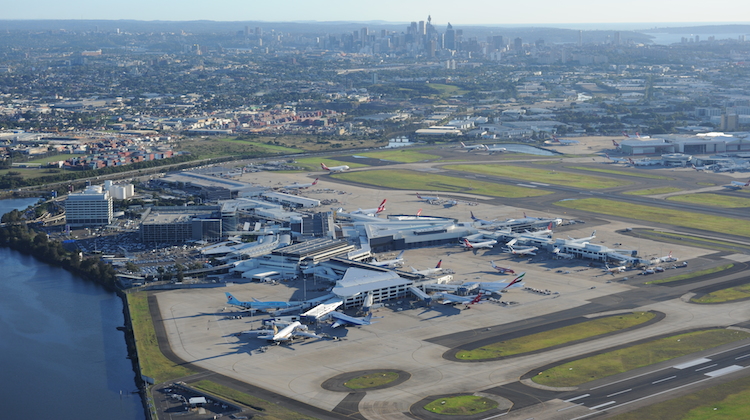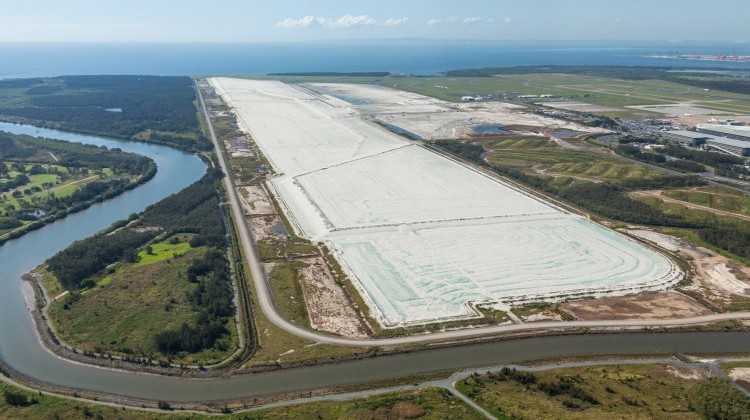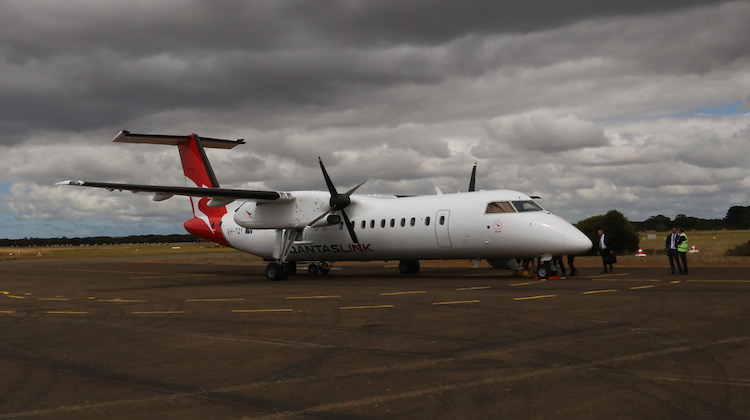
Sydney Airport has taken out the capital city airport of the year award at the Australian Airports Association (AAA) national conference for a second straight year.
The airport also received an innovation and excellence (technology) award for its facial recognition trial conducted earlier in 2018.
Sydney Airport chief executive Geoff Culbert said he was “grateful to our industry peers for their recognition”.
“However, there is still plenty of work to do and we remain committed to working with our airline partners, key stakeholders and the broader community to continue finding new ways to improve,” Culbert said in a statement.
“Sydney is one of the greatest cities in the world and we’ll continue working hard to ensure we are an airport of which Sydney and NSW can be proud.”

Others to be recognised at the AAA national conference dinner in Brisbane on Wednesday night included former Brisbane Airport chief executive Julieanne Alroe receiving an outstanding contribution to the airport industry award.
Alroe was in charge of Brisbane Airport from 2009 to 2018. Currently, the veteran aviation executive is the chair of Infrastructure Australia.
AAA chief executive Caroline Wilkie said Alroe was an obvious choice for the award.
“Julieanne has made a significant difference to our industry, especially in her home state of Queensland,” Wilkie said in a statement.
“She has led a real transformation at Brisbane Airport, getting its $1.3 billion runway project underway and creating stronger connections with the wider tourism industry.”

Away from the state capitals, Newcastle Airport was named major airport of the year for recognition of its terminal redevelopment and the return of international flights later in November, when Virgin Australia commences a seasonal flight to Auckland with Boeing 737-800 equipment.
Today we’ve announced direct flights between Newcastle and Auckland, making Virgin Australia the first airline to operate Trans-Tasman flights from Newcastle Airport in 16 years. Flights will operate from 22 November 2018 to 17 February 2019. https://t.co/uveus1LLpW pic.twitter.com/TdyUKh0Wds
— Virgin Australia (@VirginAustralia) July 18, 2018
And Whitsunday Coast Airport was named large regional airport of 2018, Kangaroo Island Airport took out small regional airport of the year award and Bairnsdale Airport won small regional aerodrome of the year.

“We have seen some exceptional entries in the awards, with many airports introducing significant initiatives or projects over the course of the last year,” Wilkie said.
“It is great to see so many airports investing to create an easy, seamless and memorable experience for their passengers, while also improving efficiency for airlines.”
Full list of awards
- Capital City Airport of the Year – Sydney Airport
- Major Airport of the Year – Newcastle Airport
- Large Regional Airport of the Year – Whitsunday Coast Airport
- Small Regional Airport of the Year – Kangaroo Island Airport
- Small Regional Aerodrome of the Year – Bairnsdale Airport
- Corporate Project of the Year – Airbus for its Sydney airport T1 transformation
- Small Regional Airport Corporate Project – BMD Group for its Kangaroo Island Airport upgrade
- Airport Innovation & Excellence (Commercial Major Airport) – Cairns Airport for its “local produce and product” project in conjunction with Tourism Tropical North Queensland
- Airport Innovation & Excellence (Commercial Regional Airport) – Broome International Airport for its partnership with Djarindjin Aboriginal Corporation (DAC) to manage the Lombadina Airport
- Airport Innovation & Excellence (Customer Experience) – Gold Coast Airport for its GC2018 Commonwealth Games project
- Airport Innovation & Excellence (Environmental Management) – Camden Airport for its conservation work with Greater Sydney Local Land Services, Conservation Volunteers Australia and Landcare Australia to protect wombats
- Airport Innovation & Excellence (Infrastructure Development Major Airport) – Hobart Airport for runway extension project completed in December 2017
- Airport Innovation & Excellence (Infrastructure Development regional Airport) – Busselton-Margaret River Airport for its Airside and landside civil infrastructure project
- Airport Innovation & Excellence (Non-Aeronautical Development) – Launceston Airport for its terminal redevelopment
- Airport Innovation & Excellence (Operations) – Perth Airport for its CAT III Lighting Upgrade
- Airport Innovation & Excellence (Technology) – Sydney Airport for its facial recognition technology trial
- Outstanding Contribution to the Airport Industry – Former Brisbane Airport chief executive Julieanne Alroe












